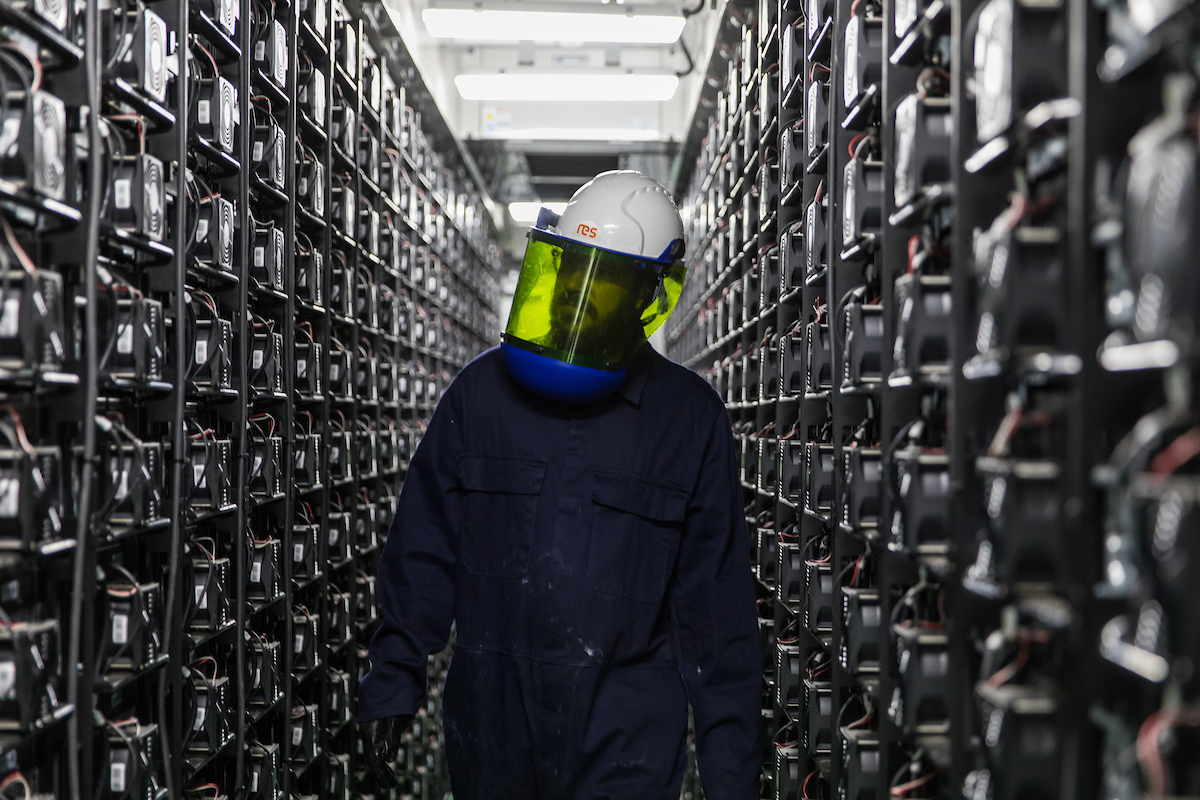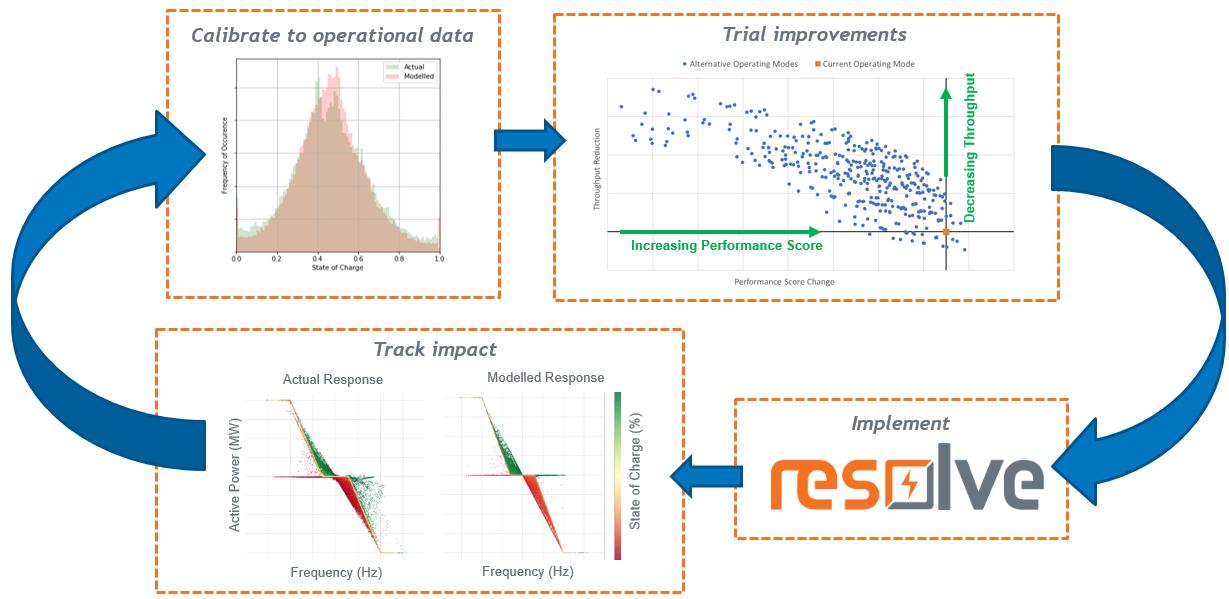Battery Energy Storage: Empowering the Decade of Mass Energy Transition
by RES | Apr 23, 2021 | Lesezeit: 6 min

Feifei Peng – Head of Storage Strategic Procurement, RES
The next decade is set to be a period of mass energy transition. The world’s leading CO2 emitters (China, US and the European Union), who together account for more than half of global CO2[1], have each set ambitious near-term climate targets by 2030 to dramatically curb those emissions. Notably, on 11 December 2020, EU leaders agreed to increase the target to cut greenhouse gas (GHG) emissions to 55% by 2030 (compared to 1990 levels). The following day, President Xi of China restated China’s commitment to reaching peak carbon by the end of this decade. And, in the US, President Biden has made the re-joining of the 2016 Paris Agreement among his immediate priorities as newly elected president. Since global primary energy consumption makes up around three quarters of total harmful GHG emissions, the stage is set for a decade of mass energy transition.
With non-emitting, renewable energy technologies such as wind and solar taking their place firmly in the mainstream in recent decades, clean electricity generation represents one of the most effective levers for achieving the necessary GHG reductions. But growth in renewable energy of this scale, although theoretically achievable, exposes some fundamental shortcomings in market design and electricity distribution infrastructure.
Take the Texas ERCOT market as an example, where we have seen substantial increases in renewable energy generation capacity over the past decade: driven by the fuel free nature of wind and solar energy, wholesale power prices in this liquid market have seen great reductions during periods of high renewable generation and dramatic price spikes when peak demand coincides with low renewable generation. The traditional definition of peak demand which follows daily, season or annual pattern is now disrupted by renewable generation whose variability requires fast, affordable and reliable response.
Secondly, although fuel free and non-emitting, renewable energy – specifically wind and solar generation – is not always optimally situated with respect to load. Such fundamentals require both considerable investment in electricity transmission and the ability to store energy, as low-cost wind and solar generation occupy an increasing share of the electricity supply mix. Battery energy storage systems (both mobile and stationary), with its falling cost and improving technology, are now viable enablers of more renewable energy and providing alternatives for increasing transmission and distribution system operators to provide safe, affordable and reliable energy to consumers. But, as a nascent industry, battery energy storage is not without its challenges, requiring careful attention to supply chain dynamics and changing standards for cost-effective deployment and safe, reliable long-term operation.
As Bloomberg New Energy Finance’s recent report on 2020 Lithium-Ion Battery Price Survey published on 16 December 2020 shows: between 2010 and 2020 there has been an 89% fall in battery pack price including a 13% decrease from 2019 in 2020. Notably this past year’s decline in cost was greater for stationary storage at 20%. Such decline in cost is largely driven by the rapid growth in demand for electric vehicles, which is impacting the dynamics of the supply chain.
Car manufacturers are taking aggressive steps to secure battery supply through equity investment in battery suppliers, forming joint ventures and/or via partnerships to jointly invest in production lines. Similarly, different energy storage integrators or EPC companies each have had to develop their own plans for defensively securing supply chain. As the industry moves forward at an expectedly rapid pace this decade, it will be important to recognise that not all batteries are created equal, and with myriad custom applications and multi-decade project life cycles it is essential that the industry pays close attention to the fundamentals: quality of design and interoperability to safeguard potential future revenues, supplier bankability, warranty and suppliers’ commitment to service such warranty. A sustainable storage market, and by extension a clean electricity supply mix, requires a healthy and diversified supply chain.
A secure and diversified supply chain is certainly important, but even more crucial is a non-compromising position on safety as an abundance of manufacturers taking debut on the international arena: batteries have inherent fire risk; according to statistics from Clean Energy Associates in the first half of 2020, China reported 20 EV fires alone and since 2017, South Korea experienced a total of 28 energy storage system fire accidents. In the United States, an energy storage system explosion occurred at a facility in Arizona that resulted in injuries to four firefighters. And in September 2020, an energy storage explosion in Liverpool rang the alarm for industry participants in the UK. As we look to the future where battery storage systems are increasingly and internationally deployed at scale, we are seeing on one hand from supply chain an increasing trend toward higher energy density, reduction in state of health limit and longer life cycles, on another hand from investors the desire to have extended battery lifetime and flexible usage, it is vital that safety is not compromised.
Deploying battery storage to truly accelerate the mass transition toward renewable energy requires more than a robust and diversified supply chain. Safely operating utility-scale battery energy storage systems to unlock their full value, whether stand alone or paired with generation, is not a trivial undertaking. Maintaining a healthy state of charge of batteries is a delicate balancing act, a choreography between hardware and software to enable seamless integration of storage assets with utilities, off-takers, and coupled generation in the case of hybrid systems. We know the future will see many storage sites performing a myriad of services, hybrid sites and a constantly evolving technology and market landscape.
RES began preparing for this over seven years ago with investment in our RESolve platform. This flexible Energy Management System (EMS) allows for tailoring a site’s components to the specific market needs to deliver quality, reliable service. We use it to hybridize sites and deliver solar sites that are storage ready and make it easier to plan for a future addition of storage. We standardize battery types, services and site architecture at the fleet level, allowing a single unified interface to manage assets and services. At the same time, the RESolve system allows for fleet standardisation while maintaining the flexibility to offer additional ancillary services and respond to future market opportunities.
Thankfully our efforts in developing RESolve pays off for our clients. The recent blackouts in August of 2019 in the UK is a good example: Ofgem, the UK market regulator, declared that “the overall performance of frequency response providers was generally inadequate.” However, the three RES developed and constructed UK assets that responded to this event did so perfectly. This was due to our ability to choose technology and design it precisely for the service required to ensure performance and revenue during the most essential times. More recently, National Grid ESO has launched a new Dynamic Containment service. The suite of flexible controls developed for RESolve can be easily adapted to deliver this service, deploy across a fleet and capture additional revenue stream for asset owners.
Behind RESolve’s algorithms is a team of data scientists who couple accurate simulations with operational data analysis to facilitate operational improvements and through life performance predictions. The harder we use the battery to perform services, the more quickly it reaches its lifetime capacity. It is therefore crucial to keep batteries operational for as long as possible. At RES our data scientists do this by finding the optimal operating zone for batteries to provide a sustainable service.
By trialling alternative control strategies in a simulation environment that is tuned to accurately represent the real system, tailored control mode improvements can be recommended and deployed in RESolve. In the example illustrated below, the possible trade-offs between battery throughput and service performance are scored for a frequency response application, leading to identification and implementation of the desired configuration. The impact of the control mode change is subsequently verified using the operational data. This process can be applied iteratively throughout the asset life to continuously adapt the operational strategy as desired. The same advanced analytics methodologies are used during the design phase to optimise the system configuration and inform techno-economic assessments.
Technology has afforded our industry many advancements, but it needs to be operated properly, in a timely fashion and be locally maintained. Safe and effective long-term operation of battery energy storage systems’ (BESS) facilities depends on robust supplier engagement, careful monitoring and timely incident response.
Introducing RES
RES is the world’s largest independent renewable energy company active in onshore and offshore wind, solar, energy storage, transmission and distribution. At the forefront of the industry for 39 years, we have delivered 19 GW of renewable energy projects across the globe and support an operational asset portfolio exceeding 7GW worldwide for a large client base.
Since 2014, RES has been operating battery energy storage projects. From conducting timely repair, preventive maintenance to the management of incidents, obsolescence and warranty, RES Asset Managers closely monitor conditions and deploy local staff to carry out preventative maintenance and manage any incidents. The benefit of this local presence was never clearer than during this past year of Covid-19 pandemic travel restriction.
Recently we constructed Top Gun Energy Storage facility in California, a 120MWh lithium-ion site, our largest in the US. Indeed, we have in depth knowledge on batteries having worked with seven different suppliers on more than 370MWh of battery projects in that time. Our vision is to create a future where everyone has access to affordable zero-carbon energy.
Today, utility-scale battery energy storage systems are essential infrastructure. They have reached both technological and commercial maturity of being investment grade assets. They are playing an increasing role in ensuring the stable operation of our generation and transmission systems, setting the stage for significantly greater adoption of renewable energy and empowering this decade of mass energy transition.
RES has been listed as one of the top three global leaders in the utility-scale energy storage market in a recent industry ranking report from Guidehouse Insights. Find out more at http://bit.ly/3rgkHJ4
Feifei Peng – Head of Storage Strategic Procurement, RES

